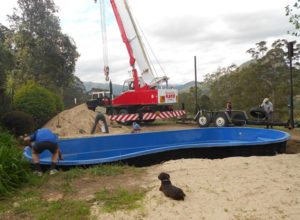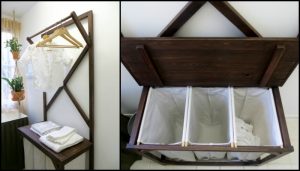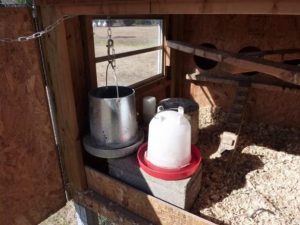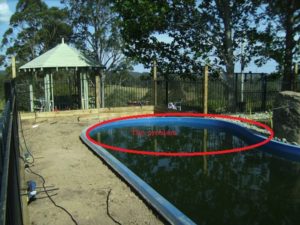Do you lack the space needed to grow the amount of produce that you want? Think again. an A-frame hydroponic system is the solution to your space limitations.
If you don’t have enough space for a traditional garden or no space at all, you can still grow a substantial amount of produce with an A-frame hydroponic system. This means that you can grow plants in a smaller space because they don’t need to spread their roots out in search of nutrients.
A-frame hydroponic systems are relatively easy to set up and maintain, and they are very efficient in terms of the amount of produce you can grow per square foot. If you’re interested in trying hydroponics, an A-frame system is a great option to consider.
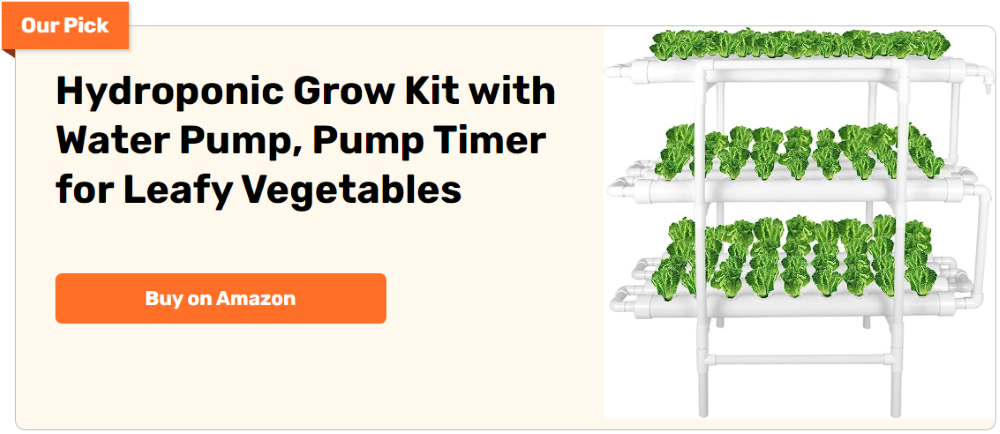
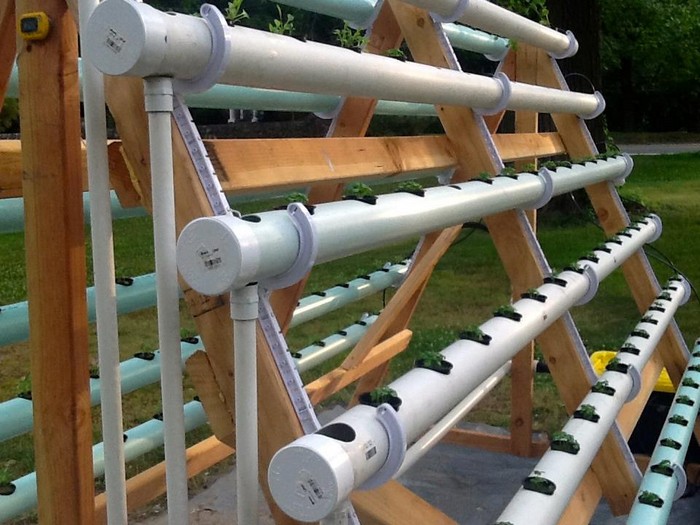
Check out our guide below to make your own A-frame hydroponic system for your garden.
Contents
Building an A-Frame Hydroponic System
Materials
- Timber (for frame)
- 3-inch Sewer/Drain Pipe
- 3/4-inch Pipes
- 1/4-inch Water Hose Pipes
- Pipe Connectors and Caps
- Pipe Brackets
- Digital Thermometer
- O-ring/Silicone
- Plastic Bin (water reservoir)
- Cable Mount
Tools
- Measuring Tape
- Drill
- Mitre Saw
- Pipe Cutter
Instructions
Step 1: Design Your A-Frame
- Decide on the dimensions of your A-frame hydroponic system. A common size is 6 feet tall by 10 feet wide, but adjust according to your space.
- Sketch your design, noting the placement of the pipes and the frame structure.
Step 2: Build the Frame
- Using the timber and mitre saw, cut the pieces for your frame according to your design.
- Assemble the frame using the drill and screws. Ensure the structure is sturdy and stable.
Step 3: Prepare the Pipes
- Cut the 3-inch sewer/drain pipes to the desired length to fit within the frame using the pipe cutter.
- Drill holes evenly spaced along the top of each pipe. These holes will hold the plants.
Step 4: Assemble the Watering System
- Use the 3/4-inch and 1/4-inch water hose pipes to create a network that will deliver water and nutrients to each plant. The 3/4-inch pipes can serve as the main water supply lines, and the 1/4-inch hoses can branch off to each plant site.
- Install pipe connectors and caps where necessary to ensure a tight, leak-free system.
Step 5: Install the Pipes on the Frame
- Secure the prepared sewer/drain pipes onto the frame using pipe brackets. Arrange them in a manner that utilizes the space efficiently and allows easy access for maintenance.
Step 6: Set Up the Water Reservoir
- Place the plastic bin at the lower end of the frame. This will serve as the water reservoir.
- Use the drill to make a hole in the side of the bin. Fit an O-ring or silicone sealant around the hole to prevent leaks.
- Connect the 3/4-inch pipe from the water pump to the reservoir.
Step 7: Install the Digital Thermometer
- Attach the digital thermometer to the system in a way that allows you to easily monitor the water temperature. This is crucial for maintaining the optimal environment for your plants.
Step 8: Final Assembly and Testing
- Use cable mounts to secure any loose pipes or wires.
- Fill the reservoir with water and test the system for leaks. Make sure the water flows evenly to all plants.
- Adjust the pH and nutrient levels in the water according to the needs of your plants.
Step 9: Planting
- Insert your plants or seedlings into the holes in the sewer/drain pipes. Ensure they are secure and have adequate space to grow.
Step 10: Maintenance
- Regularly check the system for clogs, leaks, or any signs of plant distress.
- Monitor water levels, temperature, and nutrient concentrations, adjusting as needed to maintain optimal growing conditions.
Click on any image to start the lightbox display. Use your Esc key to close the lightbox.![]()
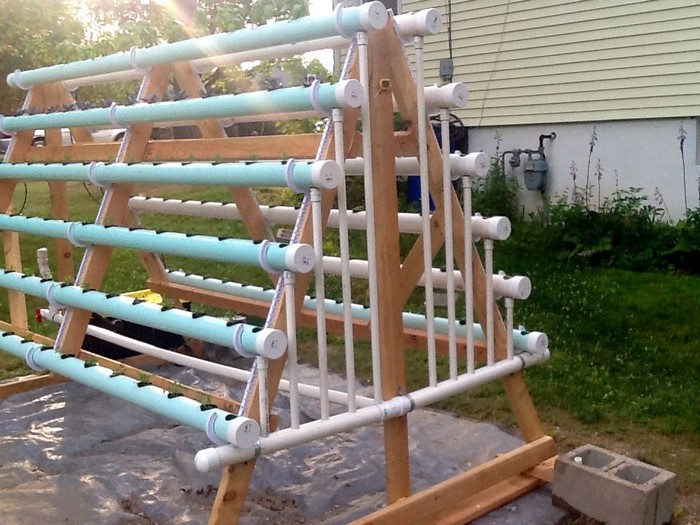
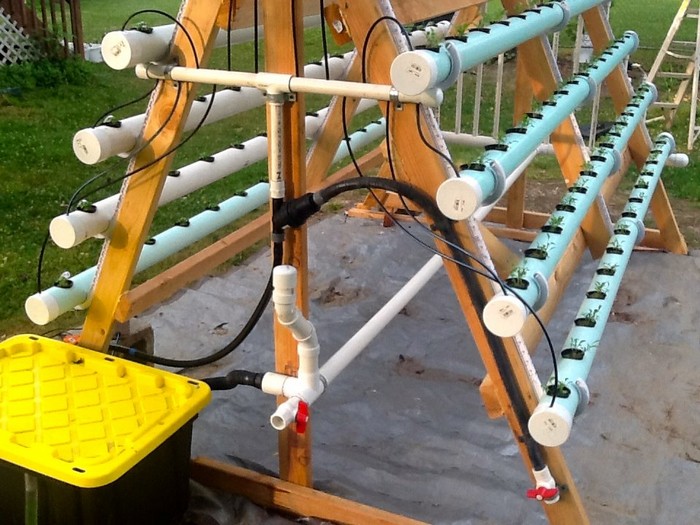
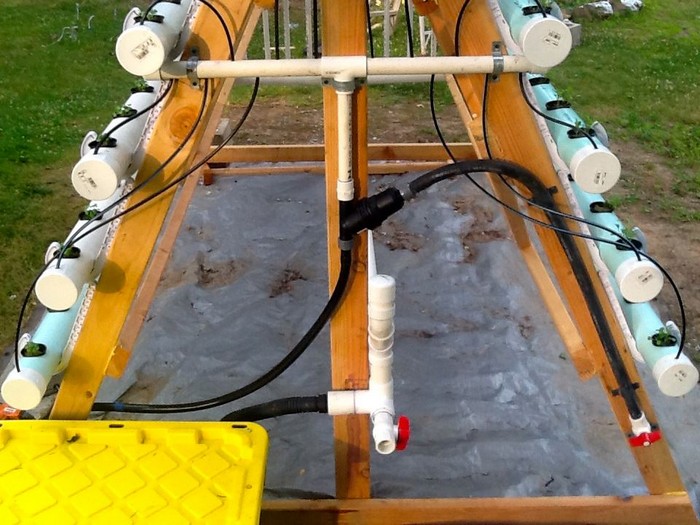
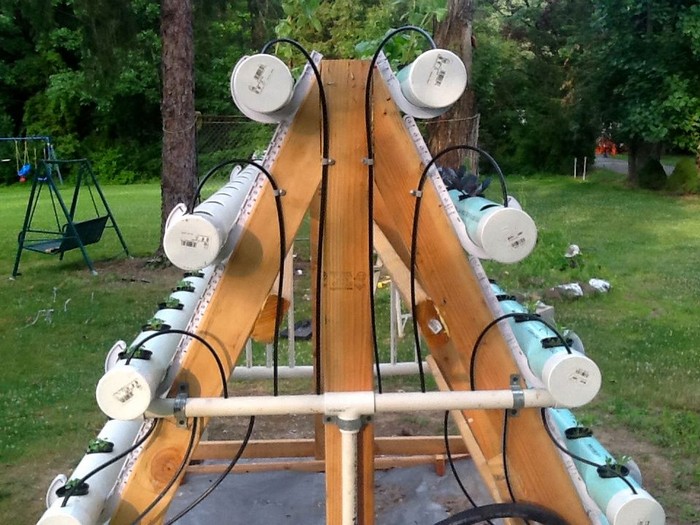

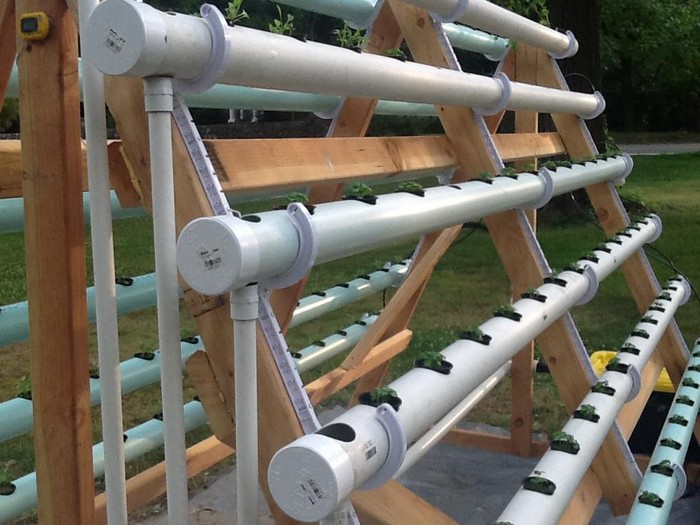
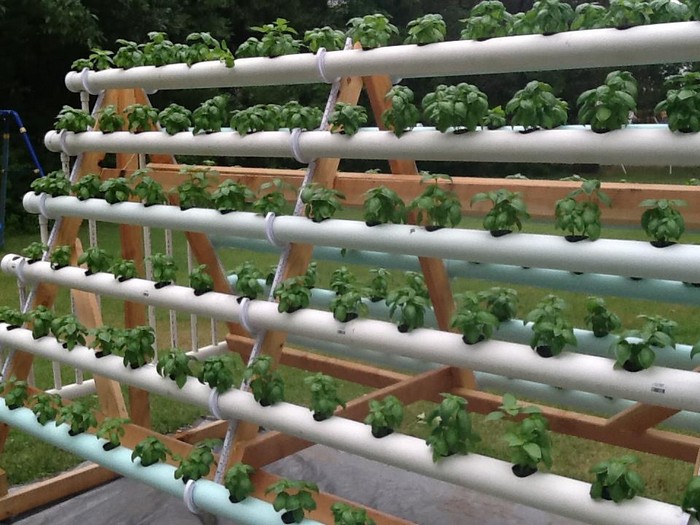
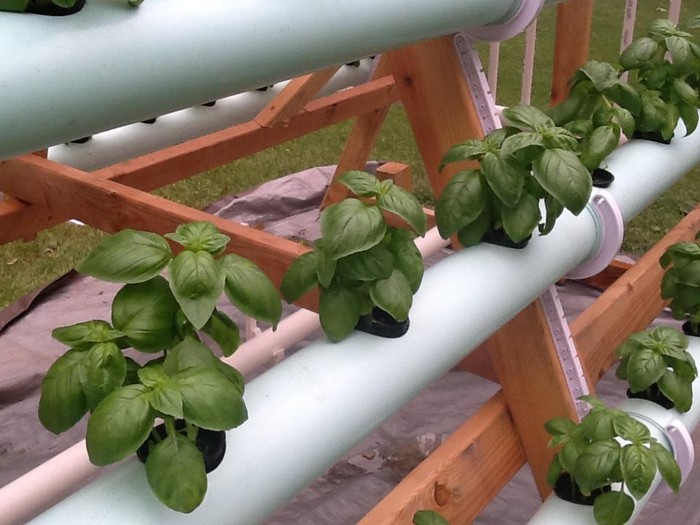
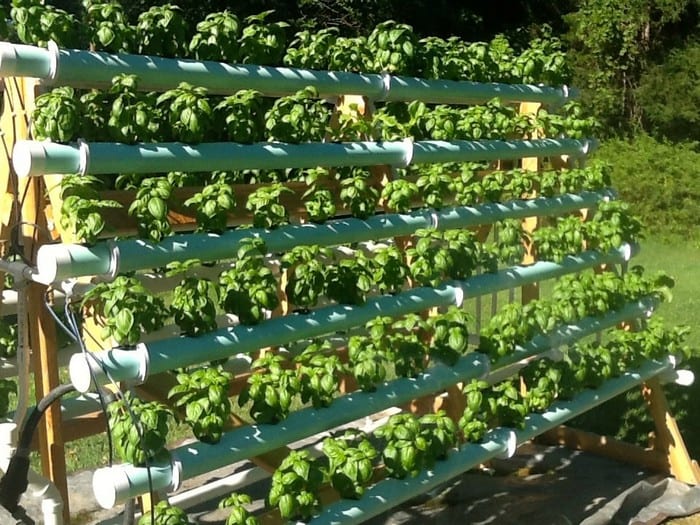
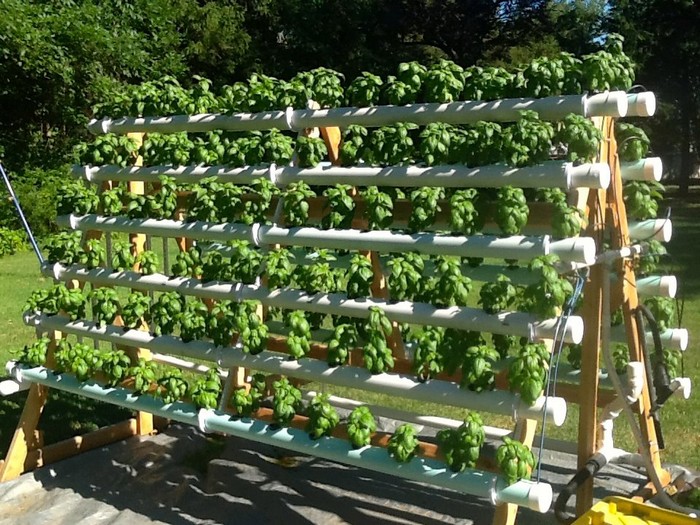
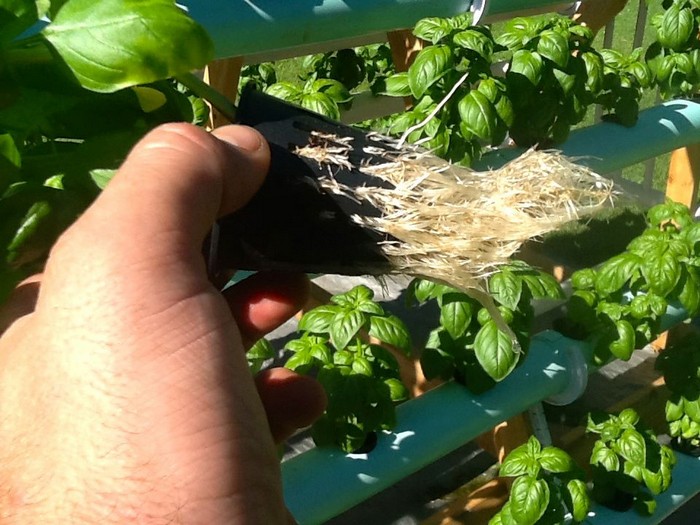
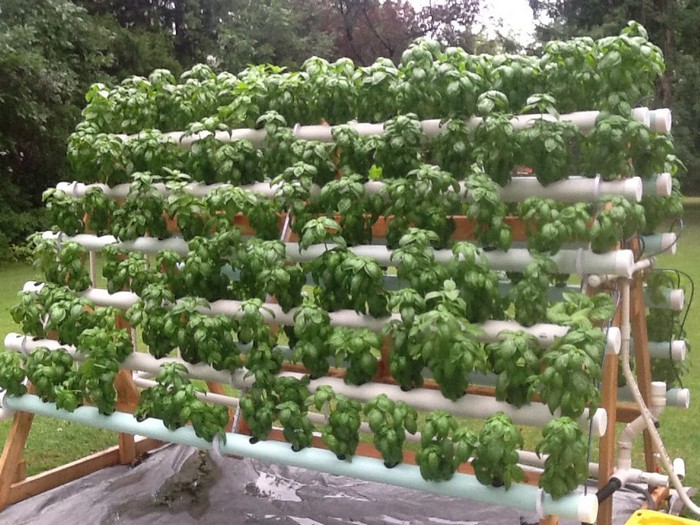
For a visual instruction to making your a-frame hydroponic system, check out the video below.
Benefits of an A-Frame Hydroponic System
Embracing an A-frame hydroponic system in your gardening venture is like hitting the jackpot for those of us who are always battling with limited space or dreaming of a garden that outperforms the traditional patch of soil. This clever piece of gardening innovation packs a punch, offering an array of perks that’ll make you wonder why you didn’t switch sooner.
Let’s look into what makes the A-frame hydroponic system a game-changer for green thumbs everywhere.
Squeezing Gardens into Tight Spaces
Have you ever felt frustrated by the lack of space for your gardening ambitions? The A-frame hydroponic system is here to save the day. Its vertical design is a real space-saver, allowing you to stack up your gardening dreams high instead of spreading them out. This is perfect for city dwellers, balcony gardeners, or anyone who’s trying to make the most out of every inch of their space.
Supercharging Plant Growth
If you’ve ever wished for a magic growth boost for your plants, the A-frame hydroponic system is as close as you’ll get. By delivering a nutrient-rich solution straight to the roots, your plants don’t waste any time or energy searching for food—they get everything they need on a silver platter. The result? Faster growth, happier plants, and a bounty of produce that’ll make you feel like a proud plant parent.
A Win for Water Conservation
In a world where every drop counts, the A-frame hydroponic system shines with its water-saving superpowers. By recirculating water through the system, it drastically cuts down on usage compared to traditional gardening. It’s a guilt-free way to garden, knowing you’re doing your part for the planet while still enjoying a lush, vibrant garden.
Keeping the Pests at Bay
We’ve all had our gardening efforts sabotaged by unwelcome critters at some point. Here’s where the A-frame hydroponic system steps in as a hero. Without soil, many common pests lose interest, and diseases find it harder to take hold. It’s a cleaner, safer way to grow your greens, giving you peace of mind and reducing the need for chemical interventions.
Gardening Made Easy
One of the joys of the A-frame hydroponic system is how it brings everything to a comfortable height. No more bending or kneeling to tend to your plants. Everything is at arm’s reach, making it a breeze to plant, check on your green babies, and harvest. It’s gardening made easy, especially for those of us who might not be as bendy as we used to be.
Garden Anytime, Anywhere
Craving fresh tomatoes in the dead of winter? No problem. The A-frame hydroponic system can be set up indoors, turning your gardening into a year-round affair. It breaks the chains of seasons, letting you grow whatever you fancy whenever you fancy. It’s like having your own personal farmer’s market at home, rain or shine.
Switching to an A-frame hydroponic system feels a bit like unlocking a new level in gardening. It’s innovative, efficient, and, frankly, a whole lot of fun. Whether you’re tight on space, looking to boost your plant growth, or just eager to try something new, it’s a fantastic move that could transform your gardening experience for the better.
Pest and Disease Management in Hydroponics
Keeping your A-frame hydroponic system healthy and free from unwanted guests—like those pesky pests and diseases—might sound like a full-time job. But with a few clever strategies up your sleeve, it’s more like setting up a good defense before the game even starts.
Let’s walk through how to keep those bugs and blights at bay, ensuring your hydroponic garden thrives.
Kick Off with Cleanliness
Think of your A-frame hydroponic system as a surgical room for plants. You wouldn’t want any nasties floating around in there, right? Making sure everything from the water trays to the plant clips is squeaky clean before you start planting is half the battle won. A regular scrub and disinfect of your setup can make a world of difference in keeping diseases out.
Picking the Right Team
Not all plants are created equal when it comes to fighting off pests and diseases. Some are the green equivalent of a fortress, naturally resilient to attackers. When you’re choosing what to grow in your A-frame, leaning towards these tough customers can save you a lot of trouble down the line. A bit of research before you buy your seeds can set you up for a smoother ride.
Water Quality is Key
Your plants drink what you give them, so serving up anything less than pristine water is asking for trouble. Keeping tabs on the pH and nutrient levels isn’t just about boosting your plants’ growth—it’s also about not giving diseases a chance to take hold. Regular checks and balances on your water quality can keep your system running smoothly.
Controlling the Climate
Just like us, plants have their comfort zones. Too hot, too cold, or too damp can stress them out, making them more susceptible to diseases. Managing the environment around your A-frame system—ensuring good airflow, the right humidity, and comfortable temperatures—can help keep your plants happy and healthy.
Friends in High Places
Introducing beneficial insects or microorganisms into your A-frame setup can be like having your own garden bodyguards. These natural allies can help keep pest populations in check, reducing the need for chemical interventions. It’s a bit like setting up a bug-friendly neighborhood watch program right in your hydroponic garden.
Barriers and Boundaries
Sometimes, a good fence is all you need to keep the invaders out. Physical barriers, like fine mesh or garden fleece, can help protect your A-frame hydroponic system from incoming pests. While it might not stop every single intruder, it can significantly reduce their numbers, making your garden a lot less appealing to them.
Vigilance Pays Off
There’s no substitute for keeping a keen eye on your plants. Regular checks allow you to spot any signs of trouble early on, making it much easier to nip problems in the bud. If you do spot something amiss, acting swiftly can often save the day, whether it’s isolating a problem plant or adjusting your system to correct an issue.
Mastering pest and disease management in your A-frame hydroponic system doesn’t have to be a chore. With these strategies in your gardening toolkit, you can set up a robust defense that lets your plants flourish, all while keeping those garden gremlins at bay. Here’s to a healthy, vibrant hydroponic garden.
Conclusion
Creating an A-frame hydroponic system opens the door to efficient, space-saving gardening, ideal for those looking to maximize their yield in minimal space. With the right care and strategic pest and disease management, this innovative system can provide a healthy, bountiful harvest of herbs, fruits, and vegetables. Embrace the A-frame hydroponic approach to revolutionize your gardening practices, bringing fresh produce to your table all year round.
We have more gardening guides. Check out our herb garden project next!


